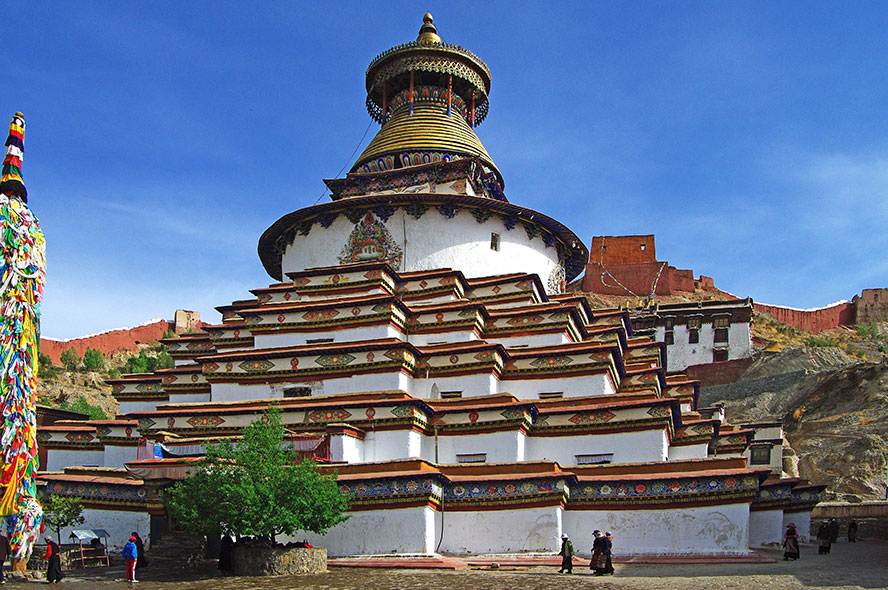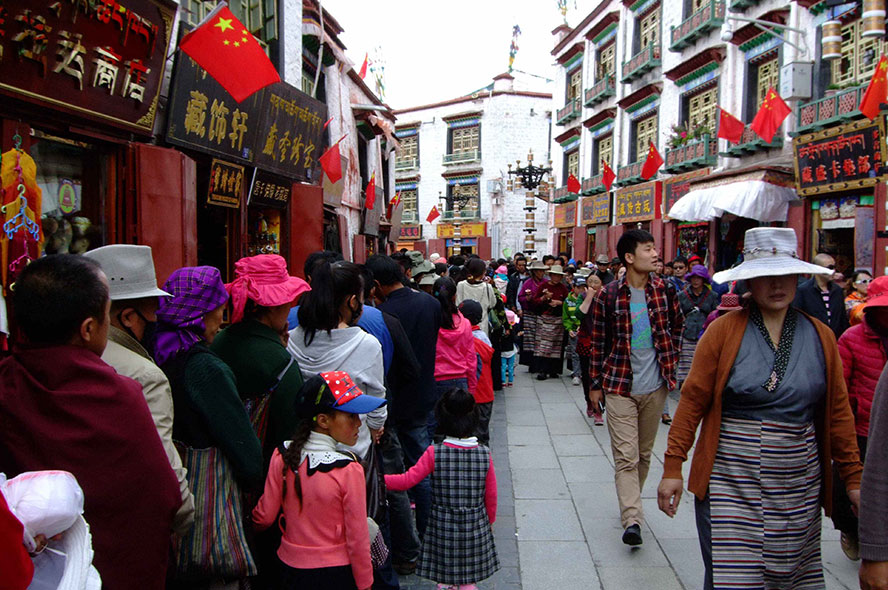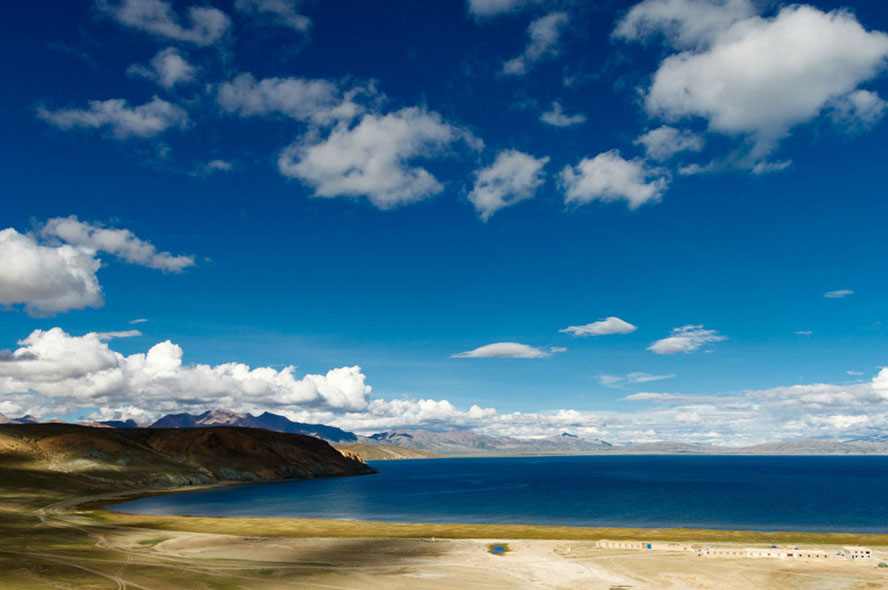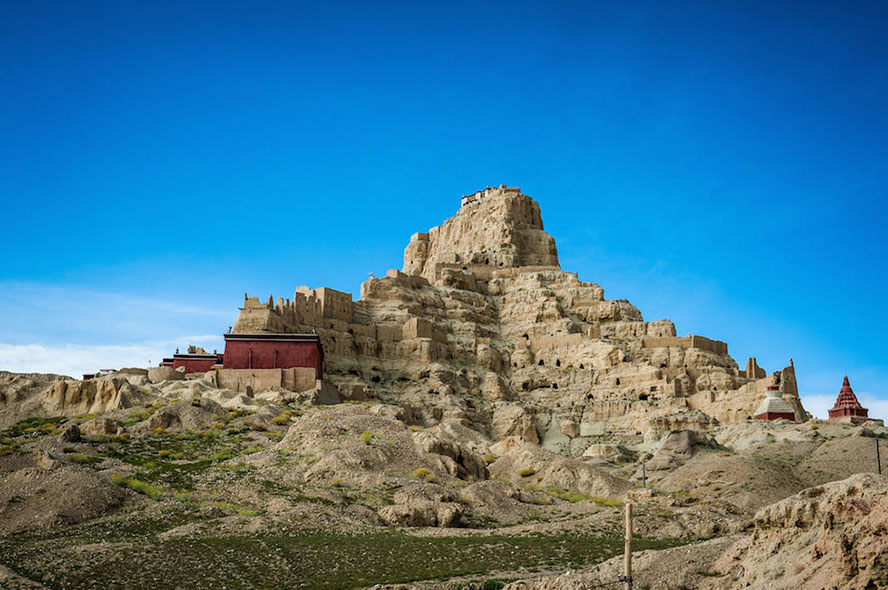The Nagqu is located in the north of Tibet, bordering Xinjiang and Qinghai in the north, Qamdo in the east, Lhasa, Nyingchi and Shigatse in the south, and the Ngari area in the west.
Nagqu town is located in the central Qiangtang Plateau in northern Tibet. Nagqu Town is 4507 meters above sea level, 307 meters higher than Pagri Town with an altitude of 4,200 meters. It is 207 meters higher than Shiquanhe Town with an altitude of 4,300 meters. Nagqu Town is the highest town of China. The Qinghai-Tibet Railway train will pass through Nagqu Town and stop at Nagqu Railway Station.
The average elevation in the area of Nagqu is high, reaching more than 4,500 meters. Nagqu possesses the highest elevation in all regions of Tibet. Nagqu is located in the north of Tibet, between the Tanggula Mountains, the Nyenchenthanglha Mountains and the Kailas Range.
The northwestern part of Nagqu is at a higher altitude, with an average elevation of more than 5,500 meters, which is not suitable for human activities. The northern part belongs to the Tanggula Mountains area, and the average elevation is also high, about 5,000 meters. The middle part belongs to the plateau hilly terrain where is mountainous, but the slope is very slow there. The southern part is the intersection of the northern Tibetan Plateau and the eastern Tibetan gorge, with an average elevation of 4,800 meters. The eastern part of Nagqu is between 3800 and 4500 meters above sea level. The terrain is inclined from the northwest to the southeast, and the altitude gradually decreases.
The tourist spots of Nagqu are mostly located in the relatively low elevation areas in the south and southeast. The Ngari North Grand Circle crossing through Tibet also travels along the south-central region of Nagqu. But visitors don't have to worry, our small Tibet Group Tour will not enter the high altitude area.
Nam-Co
Location:Nam-Co is located at the border of the Lhasa area and the Nagqu area, about 280 kilometers from Lhasa. It’s feasible to have a day trip from Lhasa. Accommodation will not be arranged in Nam-Co for general itinerary.
Altitude:4718 meters
Siling-Co
Location:Siling-Co is located in the middle of Nagqu. Siling-Co is larger than Nam-Co and it is the largest lake in Tibet. Siling-Co is a tourist attraction on the Ngari Grand Circle.
Altitude:4530 meters
Tangra Yumco
Location:Tangra Yumco is located in the junction of southeastern part of the Nagqu area, Shigatse area and Ngari. Tangra Yumco is one of the three sacred lakes in Tibet named after the "Yumco". The other two sacred lakes are Yamzho Yumco and Mapam Yumco.
Altitude:about 4600 meters
Wenbunan Village
Location:Wenbunan Village is located on the lakeside of the northeastern part of Tangra Yumco. Although it is located on the plateau, but the unique topography and climatic conditions allow the agriculture developing, thus the Wenbunan village with a large population is formed.
Altitude:about 4600 meters
Nagqu Railway Station.
Location:Nagqu Railway Station is located in Nagqu Town, the first stop of the Qinghai-Tibet Railway after it entered Tibet. The Qinghai-Tibet Highway has also passed.
Altitude:4547 meters
The Ngari Grand Circle is a tourist circle line departing from Lhasa to the north, passing through the southern part of Nagqu from east to west to the Ngari area, then southeast to Shigatse, and eastward to Lhasa. One quarter of the routes are in the Nagqu area.
How to Avoid Altitude Sickness in Nagqu
The Nagqu area is in high altitude, but the natural scenery is infinitely beautiful. Scenic lakes leap to the eyes one after another, making Nagqu become the tourism golden land to visitors. Along the routes of the Ngari Grand Circle, whether from Ngari to Lhasa or from Lhasa to Ngari, Nagqu is definitely the area that gives you the most surprises. But the routes are high, how to avoid altitude sickness?
One of the most important thing is not to go to the high altitude areas such as Nam-Co immediately when you arriving Lhasa. And don't get off at Nagqu Railway Station in advance to Nam-Co when you take the Qinghai-Tibet Railway.
But the Nagqu Railway Station is closer to Nam-Co, so many tourists have queries why they don’t get off at Nagqu Railway Station to get to Nam-Co. This is because the Nam-Co area is high in altitude. If you enter the plateau for the first time and stay in the Nagqu area for a long time may cause severe altitude sickness. Moreover, the Nagqu area is underdeveloped, and the medical conditions and accommodations are not as good as those in Lhasa. In the event of a severe altitude sickness, it is necessary to go to Lhasa to get treatment.
All of our Tibet package tour routes will place the relatively higher elevations at the end of the itinerary. This arrangement is most conducive to visitors adapting to the plateau climate.We also advise visitors when we are helping our guests to customize their exclusive itinerary. Especially for the Ngari Grand Circle, the direction Lhasa-Shigatse-Ngari-Nagqu-Lhasa is often chosen, which can effectively alleviate the altitude sickness.







































 Data in submission...
Data in submission...